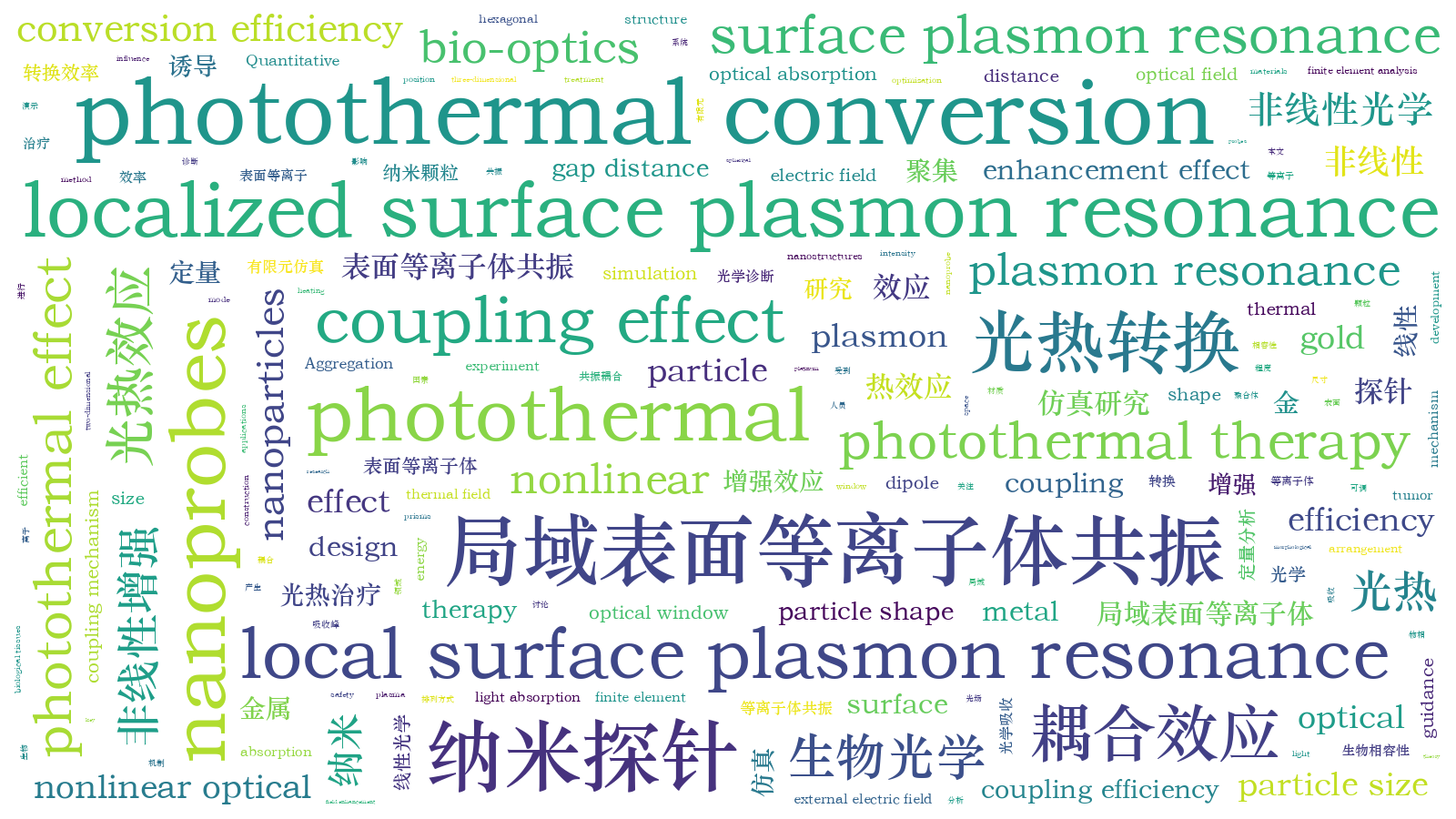定量仿真研究贵金属纳米探针聚集诱导的非线性增强光热效应
Photothermal therapy is a tumor treatment method that converts optical energy into thermal energy, kills tumor cells via local heating, and triggers biochemical processes. A necessary condition for the development of photothermal therapy is to obtain a highly efficient probe for photothermal conversion with satisfactory safety and targeting. The use of nanoprobes coupled by local surface plasmon resonance is one of the latest research and development directions in photothermal therapy. Because local surface plasmon resonance significantly depends on specific nanostructures, the position of the extinction peak is adjusted to locate in the optical window of biological tissues, and the extinction intensity is adjusted to achieve appropriate photothermal conversion efficiency, which can be theoretically achieved through the morphological design of nanoprobes. However, it remains challenging to design these nanoprobes under quantitative guidance. In this study, we systematically investigated and quantitatively analyzed the nonlinear optical field and photothermal enhancement effect produced using the local surface plasmon resonance coupling effect and their mechanisms caused by various factors. This approach provides systematic and comprehensive theoretical guidance for designing efficient plasma nanoaggregation probes.
In this study, the nonlinear optical and photothermal effects induced by the aggregation of noble metal nanoprobes were quantitatively demonstrated using finite element simulations. In each simulation experiment, nanoprobes with different degrees of aggregation, gap distances, particle sizes, shapes, permutations, and materials of nanoparticles were constructed to evaluate the influence of these factors on the aggregation enhancement effect and photothermal conversion efficiency. For the degree of aggregation, isolated gold nanospheres, regular-triangular gold nanosphere trimers, and hexagonal gold nanosphere heptamers were used as examples. For the gap distance, we quantitatively simulated gold nanosphere heptamers with gap distances of 0.5, 1, and 2 nm. For the particle size, simulated gold nanosphere heptamers with spherical diameters of 15, 30, and 60 nm were used. For the particle shape, simulated gold nanoheptamers with spheres, hexagonal prisms, and cubes were used. For permutations, simulated heptamers, rings, and chains were used. Gold and platinum were compared.
Self-assembly of nanoparticles has been a prominent topic in science and technology. Under the guidance of theory, the reasonable design and construction of nanocomponents can effectively promote their applications in photothermal therapy and other fields. In this study, noble metal nanoprobes with a specific nanocoupling structure were constructed to demonstrate the photothermal effect of nonlinear enhancement induced by aggregation. The essence of enhanced local surface plasmon resonance coupling is that, after the external electric field excites the nanounit into an electric dipole, the electric field excited by the dipole acts on other nearby dipoles. Therefore, the key to designing a high photothermal conversion efficiency is to make the dipole as strong as possible in an electric field excited by other dipoles. The simulation experiment demonstrated that a reasonable design of the degree of aggregation, gap distance, particle size, shape, and arrangement is adequate for achieving this goal. Although only two-dimensional coupled nanoprobes are shown, this approach can be easily extended to three-dimensional coupled nanocomponents with increased coupling efficiency, and nonlinear enhanced photothermal effects can be expected.
We quantitatively simulated the nonlinear enhanced photothermal effect of local surface plasmon resonance-coupled noble metal nanoprobes. Instead of isolated nanoparticles, a large number of nanoparticles gather in space and form a specific nanocoupling structure. The strong optical and thermal coupling between the nanoparticles results in an enhancement of the weighted optical absorption of each particle by several times and the corresponding thermal field enhancement. The dependence of the nonlinear photothermal enhancement effect on the aggregation quantity is discussed quantitatively. Moreover, the effects of the gap distance, particle size, shape, and arrangement mode on the photothermal conversion efficiency of the nanoprobe were discussed extensively. The photothermal nonlinear enhancement mechanism based on the plasmon resonance coupling mechanism is widely applicable to various precious metal nanomaterials. Based on finite element analysis, simulations were conducted, and the simulation results reflected the theoretical discussion satisfactorily. This study paves the way for the rational design and optimization of noble metal nanoprobes with higher light absorption and photothermal conversion efficiency.
张奇睿, 石玉娇. 定量仿真研究贵金属纳米探针聚集诱导的非线性增强光热效应[J]. 中国激光, 2023, 50(9): 0907201. Qirui Zhang, Yujiao Shi. Quantitative Simulation of Nonlinear Enhanced Photothermal Effect Induced by Aggregation of Noble-Metal Nanoprobe[J]. Chinese Journal of Lasers, 2023, 50(9): 0907201.







